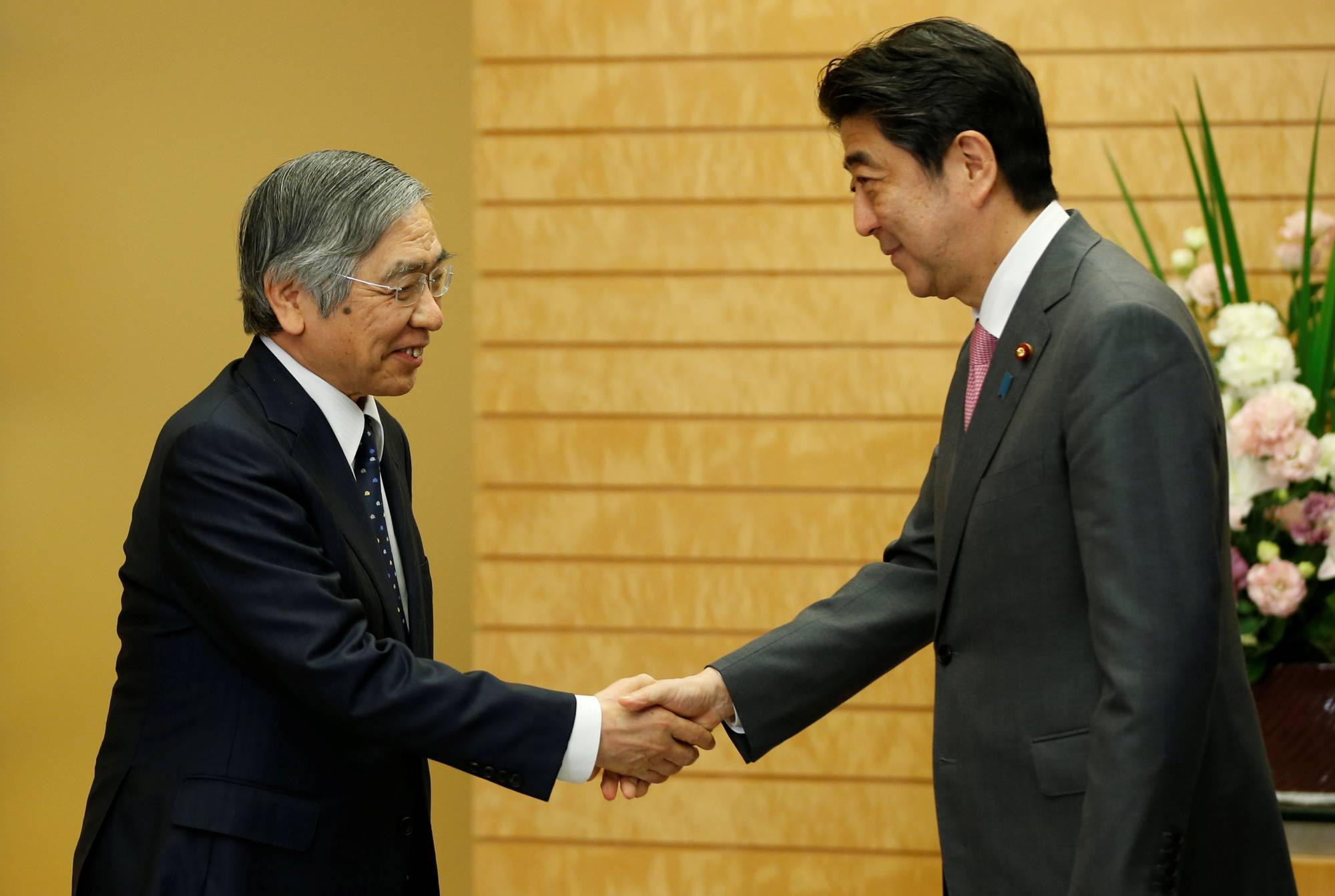Shinzo Abe, the slain former Japanese leader, made his biggest mark on Japan’s economy with a single act: The appointment of a central bank governor committed to deploy massive and prolonged stimulus. That forceful campaign to buttress growth and crank up inflation may be approaching its sell-by date.
For all the salutes to Abenomics — a mix of monetary, fiscal and regulatory reforms aimed at ending years of perceived decline — only the first of those components had real staying power. By tapping Haruhiko Kuroda to lead the Bank of Japan, a position somewhat insulated from the daily cut-and-thrust of politics, Abe ensured the printing presses would run hot after he stepped down as prime minister in 2020. But such aggressive easing does have a sunset clause, given the march toward higher interest rates in almost every other economy and the long-awaited attainment of 2% inflation in Japan.
Kuroda’s second five-year term expires in April. The pressure for his successor to pursue a different approach, or at least add some significant nuance to the current stance, might be hard to resist. Prime Minister Fumio Kishida hasn’t had much to say about what sort of person should follow Kuroda. Kishida, like Abe, is committed to monetary easing. But even a modest tightening — predicted by a minority of economists — would leave Japanese policy still very loose relative to peers.


















With your current subscription plan you can comment on stories. However, before writing your first comment, please create a display name in the Profile section of your subscriber account page.